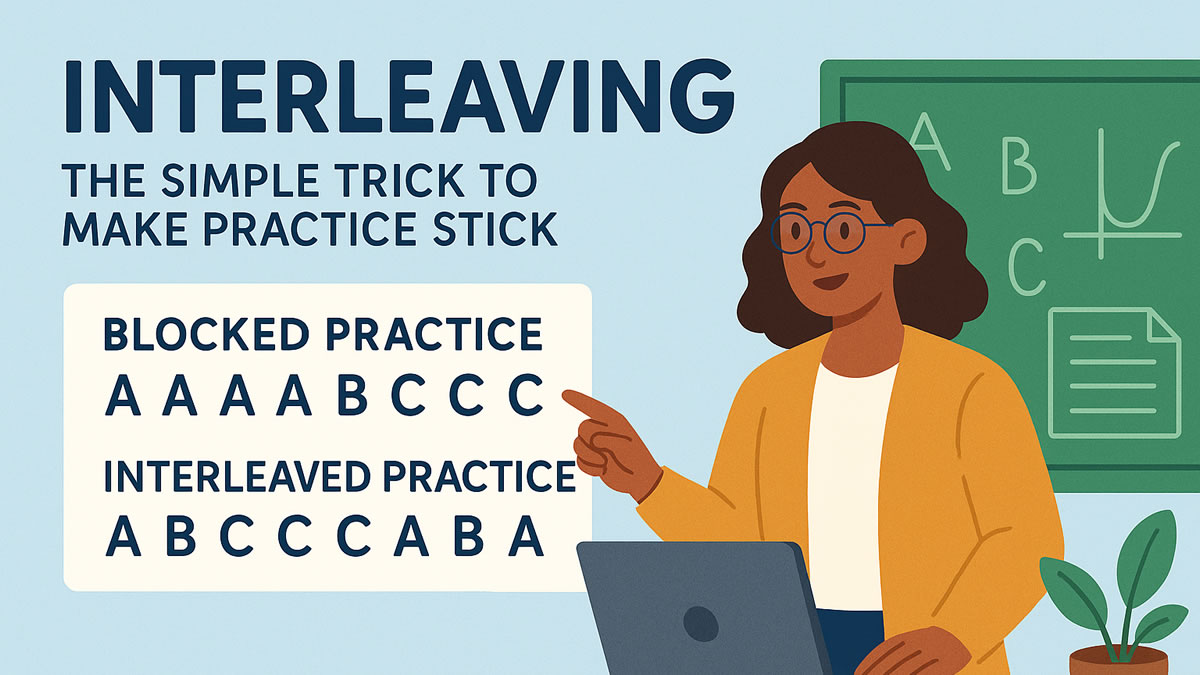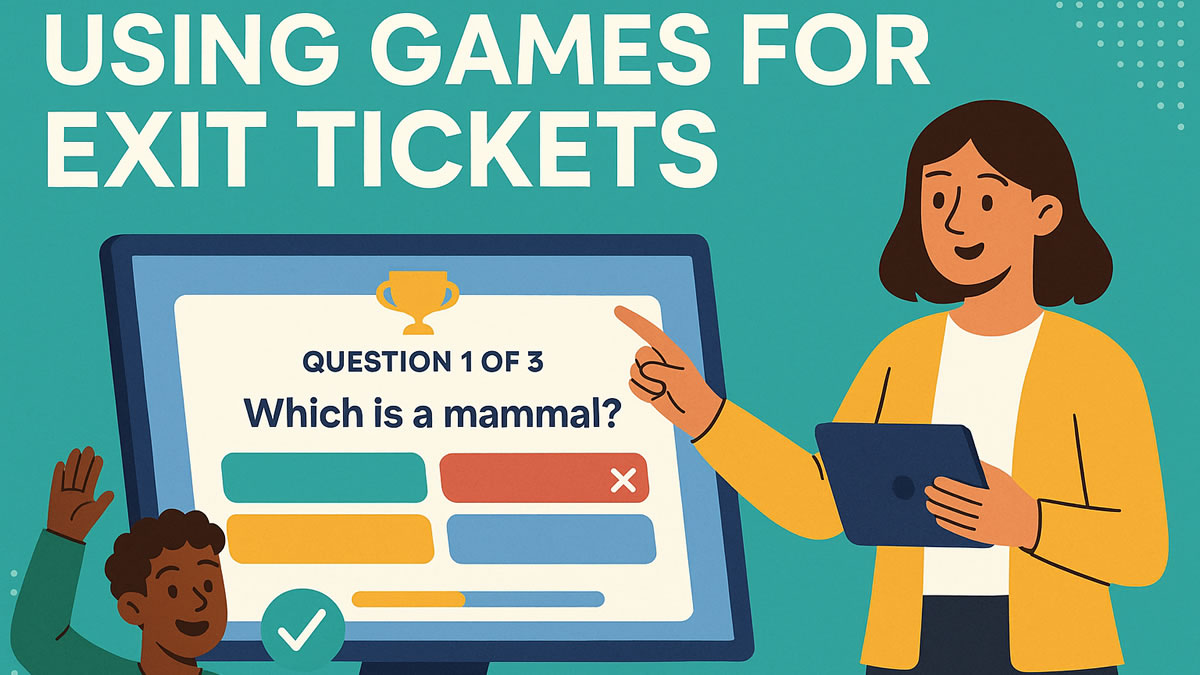How Schools Use Game-Based Learning to Improve MTSS & Intervention
MTSS teams across the country are juggling more data, more student needs, and tighter timelines than ever. Traditional assessments—unit tests, quarterly benchmarks, and standardized screeners—offer valuable information, but they often arrive weeks after students begin to struggle.
That’s where game-based learning and rapid formative assessment come in.
Schools are discovering that using quick, low-stakes learning games—combined with clear question-level analytics—gives teachers and MTSS teams the frequent, real-time data they need to adjust instruction, target Tier 2 supports, and prevent students from slipping through the cracks.
BrainFusion was designed to support exactly this workflow.
Why MTSS Needs More Frequent, Low-Stakes Data
Traditional assessments often fall short because they’re:
- Infrequent (every 4–9 weeks)
- High-stakes, creating stress rather than clarity
- Hard to act on immediately
- Not granular enough to identify which specific skills need support
- Timely
- Instructionally relevant
- Skill-specific
- Gathered from multiple opportunities over time
And that's exactly what quick, game-based assessment provides.
A 3–5 question game at the end of class offers more actionable insight than a long test delivered weeks later.
How Game-Based Learning Supports MTSS Tiers
Below is how schools integrate platforms like BrainFusion into all levels of MTSS.
Tier 1: Strong Universal Instruction Through Frequent Checks
In Tier 1, the goal is simple: ensure every student receives high-quality, grade-level instruction—and quickly identify students who need extra support.
Why Game-Based Checks Work in Tier 1
- Fast checks (bell ringers, exit tickets, mid-lesson pulses)
- Immediate feedback for students
- Low-stakes, reducing anxiety
- High engagement—even for reluctant learners
- Teachers see exactly which concepts didn’t stick today
With BrainFusion, teachers can:
- Generate quick checks in under a minute using AI
- Launch a multiplayer game without student accounts
- Review question-level insights immediately after play
- Share data with PLCs or intervention teams
💡 Tier 1 Pro Tip
Use a 3-question BrainFusion exit ticket at the end of each lesson. After one week, teachers have 15+ data points to bring to Friday PLCs.
Outcome:
Tier 1 instruction becomes more responsive and proactive—reducing the number of students needing Tier 2 intervention.
Tier 2: Targeted Small-Group Intervention Made Easier
Tier 2 interventions need precision, not guesswork.
The challenge? Teachers often enter Tier 2 with incomplete information:
“I know they’re struggling—but I’m not sure which part.”
Using game-based data solves this.
How Tier 2 Teams Use BrainFusion
Identify which specific skills students missed
BrainFusion’s question-level breakdown highlights patterns across multiple sessions.Group students by skill need, not general performance
MTSS teams can create flexible small groups grounded in actual mastery data.Deliver short, daily or weekly intervention cycles
Teachers run:- 5-minute warmups
- 3-question skills checks
- Spaced repetition sessions
Measure growth over time
Because games are quick, students can practice and reassess frequently—without burnout.
Example (Math Intervention)
A Tier 2 team notices 7th graders frequently miss:
- Combining like terms
- Distributive property with negatives
- Solving two-step equations
Instead of reteaching entire units, the interventionist uses BrainFusion to:
- Create 10–15 targeted questions
- Run short games twice per week
- Track mastery growth over two cycles
Outcome:
More focused intervention with clearer evidence of improvement.
Tier 3: Intensive, Individualized Support
In Tier 3, students need personalized instruction and high-frequency data to measure progress.
Game-based learning helps by offering:
- Low-pressure practice (ideal for anxious learners)
- Immediate feedback during 1:1 instruction
- Data that shows exactly where students struggle
- Opportunities to celebrate progress frequently
How Interventionists Use BrainFusion in Tier 3
- Create individualized question sets tied to IEP goals
- Use Flashcard Fusion for spaced repetition
- Review error patterns (e.g., place value, phonics patterns, grammar errors)
- Track micro-skills rather than broad standards
For students who often feel defeated by traditional assessments, game-based practice builds confidence while providing teachers the clarity they need.
🎓 Ready to Strengthen Your MTSS Data?
See how BrainFusion's question-level analytics support Tier 1, 2, and 3 interventions. Start with 5 free games—no credit card required.
Try Free for MTSS →MTSS Coaches & Administrators: What Data Matters Most?
Schools are increasingly using game-based platforms to support:
- PLC discussions
- Grade-level data cycles
- Intervention block planning
- District progress monitoring
- Teacher coaching
The types of data administrators value:
1. Question-Level Performance
Reveals which skills need reteaching across classrooms or grade levels.
2. Missed Question Trends
Helps MTSS teams identify systemic gaps—not just individual ones.
3. Frequency of Formative Checks
Supports instructional coaching and teacher growth.
4. Growth Over Time
Multiple low-stakes data points show whether intervention is working long before the next benchmark.
5. Patterns Across Groups or Subgroups
Helps teams ensure equitable instruction and intervention.
BrainFusion was built with these administrative needs in mind, offering clear, instructional data without overwhelming teachers.
How Schools Implement BrainFusion in Their MTSS Framework
Here are the three most common implementation models districts are using:
⭐ Model 1: “Daily 5-Minute Checks”
Teachers integrate BrainFusion:
- Bell ringers
- Exit tickets
- Mid-lesson pulses
Result:
Hundreds of data points per month—fueling PLCs and intervention teams.
⭐ Model 2: “Weekly Skill Checks for Tier 2/3”
Interventionists run small-group:
- Mini-quizzes
- Spaced repetition games
- Quick diagnostics
Result:
Faster interventions and clearer evidence of mastery.
⭐ Model 3: “Schoolwide Progress Monitoring Light”
Administrators assign 5–10 universal questions aligned to power standards each month.
Result:
Consistent, low-stress data across the whole school.
Real Example: How One School Improved Tier 2 Outcomes
A middle school using BrainFusion for math and ELA interventions:
- Switched from weekly worksheets to short BrainFusion checks
- Teachers used question-level data to form groups
- MTSS team reviewed exit ticket trends weekly
- After 8 weeks:
- Tier 2 group size decreased
- Students mastered target skills faster
- Teachers spent less time creating materials
- Students showed more confidence and participation
The principal described it as:
“The first time our MTSS meetings felt productive instead of overwhelming.”
Best Practices for Schools Implementing Game-Based MTSS Tools
Do This
- Start small with 1–2 checks per week
- Use consistent routines (bell ringer or exit ticket)
- Focus on essential standards (“power standards”)
- Review data in PLCs, not just individually
- Reassess frequently for Tier 2 learners
Avoid This
- ❌ Using games only as celebrations
- ❌ Relying only on whole-unit data
- ❌ Creating huge question banks all at once
- ❌ Using competitive modes for Tier 3 students
Final Thoughts
MTSS is most effective when schools have frequent, low-stakes, skill-specific data—and game-based learning is one of the fastest, most engaging ways to gather it.
By combining teacher-friendly workflows, AI-generated question sets, and clear question-level insights, BrainFusion helps schools move from reactive intervention to proactive support.
With the right tools, MTSS teams can intervene earlier, personalize more effectively, and spend less time chasing data—and more time supporting students.
Strengthen Your MTSS Framework With Better Daily Data
Create a free BrainFusion account and see how fast low-stakes data can power intervention.





